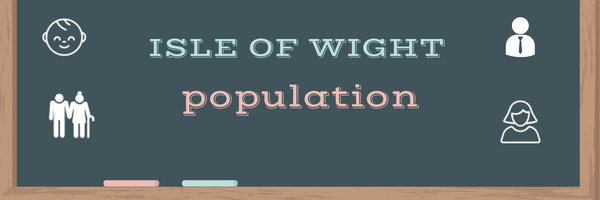
The Isle of Wight is England’s largest and second-most populous island with a population around 140,000. It is a county in the English Channel located 3.2 to 8.0 kilometres off the coast of Hampshire, separated by the Solent. Residents refer to the Isle of Wight as “The Island,” and its resorts have been popular holiday destinations since Victorian times. It is well-known for its mild climate, scenic coastline, and verdant landscape of fields, downland, and chines.
Based on our research, Isle of Wight population will reach 144,119 by 1st July of 2024. We use first day of July each year due to Office for National Statistics (ONS) normally publishes the estimated population data for the same period. The calculation is based on the average growth rate of 0.31% over last 12 years since 2011. We believe using the recent years’ figures (see the table in next section) will make the estimation more accurate.
Population Growth of Isle of Wight
Looking back over the last 12 years, Isle of Wight’s population growth has been quite inconsistent. It ranges from -0.20% to 0.56%, adding -271 to 777 people to the overall population.The population has been steadily increasing over the past decade, due to its attractiveness as a tourist destination and its excellent transport links to the mainland. In recent years, the growth rate has slowed due to COVID.
| Year | Population | Growth rate |
| 2011 | 138,392 | n/a |
| 2012 | 138,826 | 0.31% |
| 2013 | 138,555 | -0.20% |
| 2014 | 139,332 | 0.56% |
| 2015 | 139,763 | 0.31% |
| 2016 | 140,264 | 0.36% |
| 2017 | 140,984 | 0.51% |
| 2018 | 141,538 | 0.39% |
| 2019 | 141,771 | 0.16% |
| 2020 | 142,296 | 0.37% |
| 2021 | 142,680 | 0.27% |
| 2022 | 143,170 | 0.34% |
| 2023 | 143,670 | 0.35% |
Demographics of Isle of Wight
According to the most recent 2011 census, the population of the Isle of Wight is 97% white, with non-white minorities accounting for the remaining 3%.
In 2019, the median age on the Isle of Wight was 50.5, with people over the age of 18 accounting for 84.6% of the population. There were 96.1 males for every 100 females. Compare the average age by region.
The urban population of the Isle of Wight was approximately 93,566 (68%), while the rural population was approximately 44,699 (32%).
Christians are the most numerous religious group on the Isle of Wight, accounting for 61% of the population.
English is the main language of 98.2% of people on the Isle of Wight, and it is spoken well or very well by 2% of the remaining population.
Population Density of Isle of Wight
The population density of Watford is 375 people per square kilometer.
Facts About Isle of Wight
- Girls outnumber boys over the age of 90 on the Isle of Wight by a factor of two to one.
- A person born today on the Isle of Wight has an 82-year life expectancy. A girl born today on the Isle of Wight has a life expectancy of 84 years, while a boy has a life expectancy of 80 years.
- It has the UK’s oldest pier. Ryde Pier was built during the Victorian era and is the oldest pier still in use in the United Kingdom. Excellent walking path.
- Once a year, it hosts a well-known music festival. Every year, tens of thousands of people attend the summer music festival. That was hundreds of thousands the year Hendrix played in the early 1970s.
- There are more visitors than residents. On the island, approximately 140,000 people live, and approximately 2 million people visit for vacation.
- It is so fond of garlic that it hosts a garlic festival. Garlic is farmed on the island, and there is a garlic-themed restaurant, a farm where you can camp, and even a garlic festival that all garlic lovers must attend.
References
The following links provide data for this topic:
- Isle of Wight county: https://www.co.isle-of-wight.va.us/
- Office for National Statistics: https://www.ons.gov.uk
